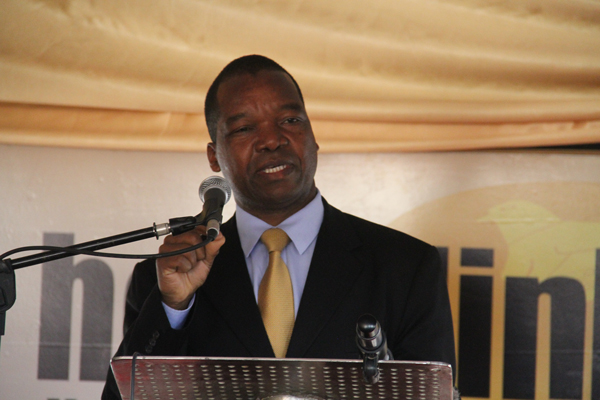
At the Copacabana bus terminus in downtown Harare, a new breed of cash barons has emerged: street agents who accost passers-by enticing them to cash out their money from mobile money wallets at a cost of 20%.
BY NDAMU SANDU & FIDELITY MHLANGA
Registered agents that have offices to work from charge a premium of 25% for cash out transactions.
These agents have invaded the streets, capitalising on the cash crisis which is showing no signs of abating despite the new administration promising to take the crisis head on.
But, despite all the problems that depositors go through to access their cash, banks are literally smiling all the way to the bank with a combined profitability of up to 33,9%. Bank profits rose from $181 million in 2016 to a staggering $241,9 million last year. Of the 19 operating banks, only one made a loss during the period under review.
An economist with a leading commercial bank told Standardbusiness the increase in profitability could be attributed to the increase in transactions, reduction in non-performing loans and banks getting income from government securities.
The cash crisis has spawned an increase in plastic money transactions with the Reserve Bank of Zimbabwe (RBZ), saying there was an unprecedented increase in values, volumes, devices and access points.
In his monetary policy statement last week, RBZ governor John Mangudya said the growth in the use of plastic money was “phenomenal” in 2017 with 96% of the $97,5 billion value of transactions going through electronic and mobile banking systems.
- Chamisa under fire over US$120K donation
- Mavhunga puts DeMbare into Chibuku quarterfinals
- Pension funds bet on Cabora Bassa oilfields
- Councils defy govt fire tender directive
Keep Reading
The economist said the reduction in the non-performing loans (NPL) ratio in the sector was also a boon for banks which meant more income.
The NPL ratio was 7,08% as at December 31 2017, down from 7,87% in the same period in 2016.
Banks, the economist said, were also getting income streams for their investment in securities as government financed the budget deficit.
Net credit to government rose by 70,45% to $6,27 billion in the 11 months to November last year from the comparable period in 2016, showing government’s reliance on the banking sector to finance the deficit.
Bank lending to economic agents grew by 44,31% to $10,637 billion in the period under review from $7,554 billion in the comparable period in 2016.
Of that, credit to the private sector rose by 6,97% to $3,705 billion. “The net increase in credit to government continues to reflect increased reliance by government on the banking sector to finance its budget deficit,” Mangudya said. Government borrows from the domestic market by issuing out Treasury Bills and Bonds which have been attractive to banks more than giving out loans to companies and individuals in the prevailing tough economic environment.
The stock of Treasury Bills and Bonds was $5,2 billion at the end of last year from $3,2 billion in 2016.
Banking sector deposits (including inter-bank deposits) improved by 26,47% to $8,48 billion as at December 31 2017 from $6,99 billion as at June 30 2017.
Mangudya said the notable increase in deposits was partly attributable to increased export receipts, expansionary impact of government expenditure and multiplier-effect of new deposits.
Banking sector loans and advances increased to $3,8 billion as at end of last year from $3,69 billion as at June 30 2017.
The increase, Mangudya said, was because of banks’ continued support to the productive sectors of the economy, with lending to the productive sectors constituting 73,64% of total sector loans by end of 2017.
Banks aggregate core capital increased by 10,48% to $1,37 billion from $1, 24 billion, on the back of improved earnings performance with all banking institutions in compliance with minimum capital requirements of $25 million.











